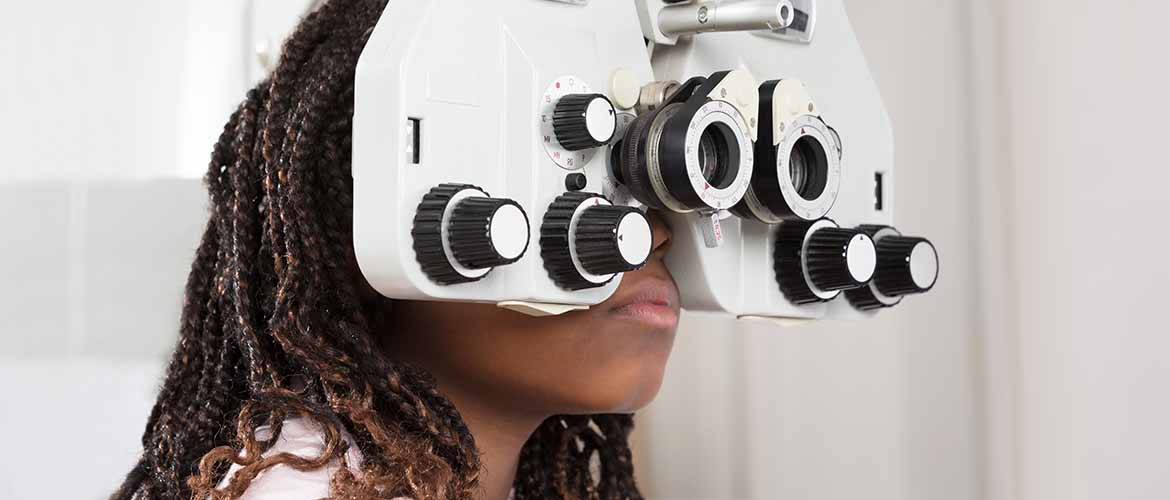Call 1-844-832-2689 to schedule a DOT physical.
Who Needs a DOT Physical?
A Department of Transportation (DOT) physical is required to ensure that professional drivers are in good health and that they can safely operate commercial vehicles. This protects your safety as well as those who share the road with you.

According to the Federal Motor Carrier Safety Administration (FMCSA), the group who governs DOT physicals as well as the health professionals who are certified to provide these services, a DOT physical is required when a driver is operating a commercial vehicle across state lines (also called “interstate driving”), that:
- Has a combined gross vehicle weight or weight rating of 10,001 lbs. or more
- Is designed or used to transport 9-15 passengers (including the driver) for compensation
- Is designed or used to transport 16 or more passengers (including the driver) regardless if for compensation
- Transports hazardous materials in quantities that require placarding under the hazardous materials regulations
Intrastate drivers, or drivers that stay within one state, may also require a DOT physical depending on the regulations that are specific to their states.
Where are DOT Physicals Administered?
DOT physicals can only be administered by an FMCSA certified medical provider. These are providers who have specific FMCSA training and are registered on the National Registry of Certified Medical Examiners (NRCME). To find a DOT certified provider near you, you can search the NRCME site.
When Does a DOT Physical Need Renewed?
Depending on the outcome of the physical, a certification can be valid for up to 24 months. However, if the medical provider determines that the driver has existing conditions that need to be monitored, they can certify them for less than 24 months. Common reasons for giving a less than 24 month certification include high blood pressure, heart disease, diabetes, or a sleep disorder such as sleep apnea.
What Should You Expect During a DOT Physical Examination?
A DOT physical exam has many different components. Here are the six things to expect during a DOT physical.1
1. Medical History
During a DOT physical, the driver will need to provide extensive background on their medical history, including past surgeries, medications taken, and history of health conditions. It is important to be honest when providing health history as there could be repercussions later on if the correct health history is not provided.
2. Vitals Testing and Physical Examination
A large portion of the DOT physical is testing vitals. Testing includes pulse, height, weight, and blood pressure. The FMCSA also requires urinalysis, which looks at the protein, blood, and sugar in a urine sample to rule out underlying medical problems.
3. Vision Testing
In addition to more general testing, the FMSCA requires vision testing to ensure drivers are meeting the standard of at least 20/40 vision acuity in each eye with or without correction (glasses or contacts) and at least 70° field of vision in horizontal meridian measured in each eye (the area of visibility for each eye’s line of sight).

4. Physical Examination
A physical examination is also required and the examiner will first evaluate general physical appearance for things such as obesity and other medical conditions, and then examine the various body systems, including skin, lungs, the neurological system, and more.
5. Drug Screen
Although it is not part of the DOT physical exam, the DOT also requires a drug screen which can usually be completed at the same time as the physical examination.
How to Prepare for a DOT Physical at MedExpress
In general, the DOT physical itself should take approximately 45 minutes, so be sure to plan accordingly. Before arriving for a DOT physical, it is important for the driver to gather the necessary information and documents to bring. The driver should bring:
- A valid driver’s license
- MedExpress Employer Authorization Form (if you are being sent by your employer)
- List of current medications
- List of past surgeries and medical conditions
- List of any allergies
Additionally, if the driver has any pre-existing conditions that require additional paperwork, they should bring the necessary documentation . Examples of additional documentation include a copy of a stress test or echocardiogram for those with a Coronary Disease or completed medical exemptions for vision, hearing, or seizure disorders.
What Happens Next?
Upon finishing the physical exam, the examiner will complete his or her assessment and complete the required physical paperwork. The provider can certify a driver for the full two-year period or chose a shorter time period if medically necessary. Some health conditions require routine annual monitoring while others may just need a shortened initial monitoring period while other testing is performed. A certification card will be provided to the driver at the conclusion of the visit. If the provider does not have enough information at the time of the exam, and approval isn’t possible, the exam may be suspended while the additional information is gathered.
At MedExpress, we have over 700+ providers who are certified to complete DOT physicals, and are always staying up-to-date on the latest regulations. You can schedule a DOT physical up to 30 days in advance by calling us at 1-844-832-2689.
For more commonly asked questions regarding DOT certifications, visit our DOT Physical FAQs.
are you an employer?
Learn how our full range of occupational physicals and screenings can benefit your business.
References
1 FMCSA: Medical Examination Report Form. Last updated September 30, 2018. Accessed November 20, 2018.

